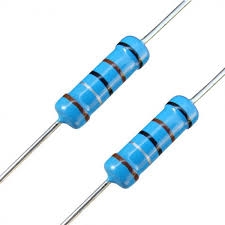Short-circuit and fuse
An external circuit with a resistance of 3.8 Ω is connected to an electrical voltage source with Ue=12 V. A current of 3 A passes through the circuit.
Find:
1. source terminal voltage,
2. the internal resistance of the source,
3. maximum short-circuit current.
Find:
1. source terminal voltage,
2. the internal resistance of the source,
3. maximum short-circuit current.
Final Answer:

You need to know the following knowledge to solve this word math problem:
basic operations and conceptsthemes, topicsGrade of the word problem
Related math problems and questions:
- Closed circuit
 There is a voltage source with U1 = 12 V in a closed circuit and with internal resistance, R1 = 0.2 Ω. The external resistance is R2 = 19.8 Ω. Find the electric current and terminal voltage.
There is a voltage source with U1 = 12 V in a closed circuit and with internal resistance, R1 = 0.2 Ω. The external resistance is R2 = 19.8 Ω. Find the electric current and terminal voltage. - Resistance 82714
 A load of 23.5 ohm is connected to an ideal voltage source of 30V, and a current of 1.2A passes through the circuit. Determine the magnitude of the source's internal resistance and the short-circuit current.
A load of 23.5 ohm is connected to an ideal voltage source of 30V, and a current of 1.2A passes through the circuit. Determine the magnitude of the source's internal resistance and the short-circuit current. - A fan
 A fan with a resistance of 20 Ω is connected to a power supply. The current flowing through the circuit is 2.5 A. What is the voltage of the power supply?
A fan with a resistance of 20 Ω is connected to a power supply. The current flowing through the circuit is 2.5 A. What is the voltage of the power supply? - Resistance 82533
 A current of 275 mA passes through the filament of a light bulb with a resistance of 800 Ω. What voltage is the bulb connected to?
A current of 275 mA passes through the filament of a light bulb with a resistance of 800 Ω. What voltage is the bulb connected to? - Resistance 44921
 The bulb's resistance at a power input of 40 W is 10 Ω. To what voltage source is it connected? How much current is flowing through it?
The bulb's resistance at a power input of 40 W is 10 Ω. To what voltage source is it connected? How much current is flowing through it? - Two resistors 5
 Two resistors are connected in parallel. The first resistor has a resistance of 2000 ohms and a current of 4 mA flows through it. The second resistor has a resistance of 1600 ohms. 1/Draw a circuit diagram 2/Determine the voltage of the power source. 3/Wh
Two resistors are connected in parallel. The first resistor has a resistance of 2000 ohms and a current of 4 mA flows through it. The second resistor has a resistance of 1600 ohms. 1/Draw a circuit diagram 2/Determine the voltage of the power source. 3/Wh - Serial resistors
 In the circuit shown ( two resistors, R1 and R2, serially connected), the total resistance from A to B is 16 ohms. If the voltage between A and B is 10 V, find the resistance R2 and the current through the R1 = 12-ohm resistor.
In the circuit shown ( two resistors, R1 and R2, serially connected), the total resistance from A to B is 16 ohms. If the voltage between A and B is 10 V, find the resistance R2 and the current through the R1 = 12-ohm resistor.
